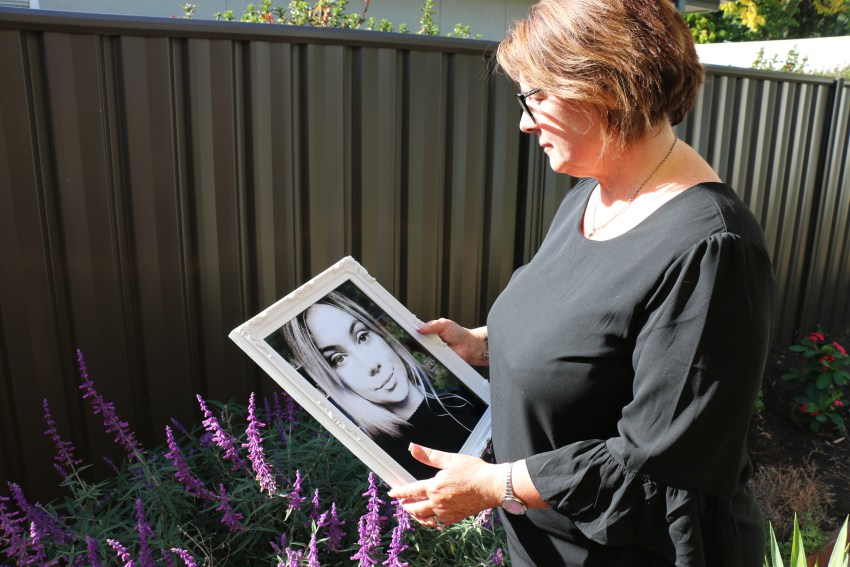The funeral industry has seen a spike in livestreamed services since the government brought in restrictions on social gatherings, bringing about a new way of being together online.
Revolutionising rituals: The rise of virtual funerals
SPECIAL REPORT: COVID-19 ADELAIDE
“Due to current government restrictions, there are many loved ones who can’t be here today and they’re joining us through Facebook Live,” funeral celebrant Olivia Harrison says to the family of Krysten Telford, and over 200 people around Australia watching online.
“Those here are adhering to the restrictions with spacing all around and only those who live in the same household are super close together.”
Before the advent of COVID-19, it would be unusual for a video of a funeral held in Mount Gambier to receive 4,000 views. When CityMag scrolled past the video, we assumed it was a clip gone viral.
Last month, Prime Minister Scott Morrison announced new restrictions to limit the spread of COVID-19, including limiting funeral services to only 10 people.
Krysten worked for Aboriginal-owned organisation Kalano Community Association and was driven by the need to help others, especially the vulnerable, and also enjoyed “getting the most out of everything”, including her life, her mother, Leanne Farnden tells CityMag.
Krysten died by suicide in the remote Northern Territory community of Katherine, roughly 320km south of Darwin, on Tuesday, 17 March, and was cremated in the Northern Territory capital. Her ashes were then sent to South Australia to be interred during the livestreamed service.
The COVID-19 shutdown presented challenges from early on; Leanne couldn’t visit Darwin due to travel restrictions, but staff at the crematorium kept her updated throughout the process over the phone.
Leanne posted updates on a Facebook memorial page for Krysten’s family and friends to keep them in the loop wherever they happened to be around Australia, and said this helped her and others feel connected.
“Again, that’s a bit different in how the so-called run of the mill funeral might be but, in a way, it worked out ironically better,” Leanne explains.
“We actually chose Krysten’s plot (at Carinya Gardens Cemetery) over Zoom.”

Leanne holding a photo of her daughter Krysten
Leanne says the virtual service helped avoid further sadness. It also helped others connect to the experience.
“I think the way that we did it certainly was less traumatic,” Leanne says.
“There’s so much more emotion (at a traditional funeral).
“That’s what a funeral is meant to be – for people to be there for each other and to hug and to cry and to mourn the one that’s gone, but for my mom with her dementia that would have really rattled her.”
During the interment service family members spoke fondly of Krysten. Comments rolled in from disparate friends across Australia, peppered with love-heart emojis.
Leanne understands why others may be hesitant toward virtual funerals – a nephew who wasn’t permitted at the service due to the 10-person limit told his aunty he would have liked to be there to show his support.
But for her it helped, and it would have been what her daughter wanted.
“Personally, if I spoke at Krysten’s funeral, if I had looked out and saw 300 people there, I think I would have struggled perhaps more in being able to say what I wanted to say. I feel like that was a positive for me,” Leanne says.
“It definitely did save my dad and my mum the torment, like they got to see the ashes and say their goodbyes to Krysten that way.”
Adelaide’s largest cemetery, Centennial Park, says since the restrictions have been enforced more than half their services have been livestreamed; however, CEO Janet Miller believes the online offering long-term is “not the answer”.
“Live streaming allows people to see the service, but it misses a big part of the ritual, which is the human connection that we all need at times of loss,” Janet says.
Founder of local broadcasting and media production company Digiflix, Ian Wigzill, says there has been a “spike” in interest for his livestreamed funeral services, too.
Ian says there were six livestreams last week, and before COVID-19 there would usually have been one a month for individuals with extended families overseas.
Customers have told him “it just feels wrong not to be able to hug everyone” at these livestreamed and socially distanced funerals.
He says he’s seen people crying out of the corner of his eye while filming, unable to be physically comforted by family members. If he were to die tomorrow, he says the 10-person allowance “wouldn’t even cover the siblings.”
But Leanne has future plans to celebrate her daughter’s life, once the coronavirus restrictions are lifted.
She has established a GoFundMe page for people to donate to a larger-than-life party she has planned for family and friends.
Now that the virtual service exists online, Leanne regularly returns to the video, which she will keep on Facebook indefinitely.
“Overall, I think virtual funerals are the new thing that should happen – but for some other people I could imagine how difficult it would be,” she says.
The only advice she can give for the times we are currently in is to regularly check in on the ones you love and learn to identify and respond to mental health issues, should they ever become present.
Leanne has established an online memorial page for her daughter, to continue her legacy, via this link.




